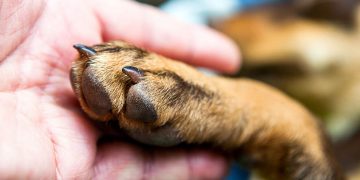Texas Longhorn Cattle are a popular breed of cow, but they’re not as well known as some other breeds. If you’ve ever wondered about how Texas Longhorn cattle came to be or what makes them different from other cattle, look no further! We’ve got all the facts you need right here.
The origins of the Texas Longhorn are very mysterious.
It’s hard to pinpoint exactly how the Texas Longhorn got its start. Some scholars believe that the breed originated in Mexico and was introduced to the United States at some point between 1820 and 1840, before being brought to Texas by Anglo settlers. Others claim that the breed is of Spanish origin, with ties to Andalusia or Extremadura in Spain. However, it’s difficult for researchers to determine which theory is correct because there are no records of any cattle keeping practices from these regions during this time period (the earliest known reference to anything resembling Texas Longhorn dates back only as far as 1778). Despite these conflicting theories about its origins, one thing we do know for sure: by 1850, there was an estimated population of 25 million head roaming free throughout America—and most were considered wild rather than domesticated!
Longhorn cattle are not actually from Texas.
Did you know that Texas Longhorn cattle are not from Texas? They’re originally from Mexico, and were brought to the US by Spanish explorers.
Turns out, it’s a bit more complicated than that. The animals we now call “Texas Longhorn” actually started out as “coahuilenos.” That name was given because they were originally found in Coahuila, Mexico (as well as some other parts of northern Mexico). But then things changed: In the 19th century, people started calling them “Texas Longhorns,” even though they’d been in the country for hundreds of years already—and even though they aren’t technically considered native to Texas at all!
They’re one of the oldest breeds of cows in the United States.
The Texas Longhorn is one of the oldest breeds of cow in the United States. In fact, you’ll often hear them referred to as “cowboy’s cows” or “longhorns.” It’s easy to see why they’re so popular with cowboys and cattle ranchers: they’re strong, resilient animals that can survive in harsh conditions.
Texas Longhorns are specially adapted to life on the range. They have long horns that protect their heads when fighting with other bulls over territory or mates (and even during rutting season—the breeding period). This genetic trait also helps them avoid predators such as bears and mountain lions by giving them more room for escape than most other breeds have.
Longhorns were once almost extinct!
- Longhorns have been around for a long time. The breed was once almost extinct due to several factors:
- Lack of natural predators, which would keep herd size down and prevent overgrazing
- Lack of natural food supply, which would force them to move on so they could find food elsewhere, thus limiting their impact on the land
- Lack of genetic diversity in herds because of low breeding numbers (only one cow at a time can reproduce) and no cross-breeding with other breeds
- Lack of interest in breeding programs or knowledge of how to create them
Longhorns can live a very long time.
Longhorns can live a very long time. The average age of a Texas Longhorn is 10-12 years, with the oldest recorded Texas Longhorn being 26 years old!
In addition to their longevity and hardiness, they are also intelligent and docile. While not all breeds of cattle are as intelligent as Texas Longhorns, there are some other breeds that have been known to have an above average intelligence level for cattle.
Longhorns are tough and adaptable.
One of the best things about Texas Longhorns is their ability to handle all kinds of weather. They can survive in a wide range of climates, from frigid winters in Canada to the hot and humid summers of the Deep South. Longhorn cattle are hardy and adaptable, which makes them great for long-term survival on little food or water.
Longhorn cattle are also incredibly tough—they can withstand harsh conditions and have been known to live through blizzards, droughts and other natural disasters.
You can identify a Texas Longhorn by its color and horns!
- If you’re out in Texas and see some cattle, you may be looking at a Texas Longhorn.
- To identify a Texas Longhorn, look for its color and horns:
- They are black, red, brown, or white (although most are either red or brown)
- They have horns (as opposed to cowboys) that can reach up to 60 inches long
- The face of a Texas Longhorn is long and thin with large nostrils
- A short coat helps protect them from heat stroke
People tend to be very proud of their Texas Longhorns.
People tend to be very proud of their Texas Longhorns.
In fact, they’re so proud that they’ve made it a symbol of the state itself. The longhorn is on the state flag and seal, and it’s also the official mascot of several colleges in Texas. There’s even an entire organization dedicated to preserving this breed: The Texas Longhorn Breeders Association (TLBA). If you love these animals as much as many Texans do, then you might want to join it!
Unlike most other cows, Texas Longhorns are practically disease-free.
The Texas Longhorn was originally bred by Spanish settlers in the early 1800s. It was a common sight, both on ranches and in town, throughout the Southwest up until the mid-1900s.
Texas Longhorns are hardier and more resilient than cattle of other breeds. They can live in harsher climates without difficulty, and they’re good mothers—their calves often thrive even when the mother dies or is separated from them for long periods of time. You’ll also notice that these animals are much calmer than other breeds; if you’ve ever been around cows before, you know how skittish they can be!
Read More:
They can produce more than one calf in the same year.
Longhorn cattle are a very fertile breed, meaning they can produce calves year after year. In fact, they can have up to three calves in one calendar year! Not only that, but Texas Longhorns have been known to have twins or even triplets.
There is so much you probably didn’t know about the Texas Longhorn!
- Did you know that the Texas Longhorn is not actually from Texas?
- It’s true, ladies and gents: those majestic horns do not lie. The breed originated in Mexico, but was brought to Texas by settlers during the mid-1800s.
- The longhorn cattle aren’t just beautiful animals—they’re also quite old! In fact, they are one of the oldest breeds of cows in America.
- The average lifespan of a Texas Longhorn cow is 15 years old or more; however, some can live up to 25 years!
Conclusion
I hope you enjoyed learning more about Texas Longhorns. They’re one of the most unique and fascinating animals on the planet! Since their numbers are dwindling, it’s important that people know more about them so they can be protected from extinction like other endangered species.

























